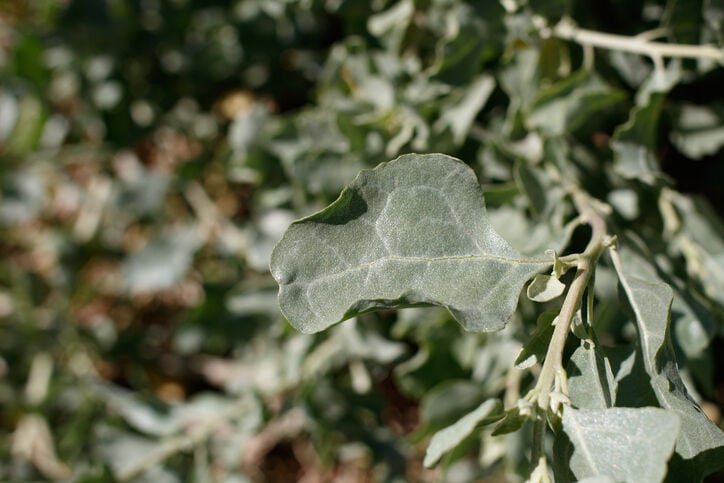Quailbush (Atriplex lentiformis) is a great native plant if you want a large, fast screening hedge, windbreak, or background in your yard. It’s also beloved by wildlife, attracting not only quail but many other birds as well as lizards and various mammals, both small and large.
The leaves are small and greyish green in color. The flowers are not noticeable, but the female plants produce brown seeds. Quailbush does best in full sun and can tolerate nearly any well-draining soil. It is hardy to 12 F and can grow quite large — up to 10 feet tall and wide, if it has a steady water supply. It will stay smaller in yards if you limit your watering. Once it’s established, it shouldn’t need any extra watering and will thrive on benign neglect — although it may lose its leaves if it’s a particularly dry year.
In the wild, this plant can be found below 4,000 feet elevation from the grasslands of New Mexico, through the deserts and riparian areas of Arizona and Sonora, all the way to the coastal areas of Southern California. It is one of several related species of saltbush, which thrive in salty soil. When it reaches its full size, it can provide cover and food for animals as large as deer. It is also fire resistant.
Plants can be male, female, or both, and can change sexes or change from one sex to both. Female plants produce lots of seeds, so this feature (plus its large size) makes them more appropriate for planting in areas that do not require much maintenance (such as the periphery of a property).
The plant has medicinal uses: its leaves can be used to treat nasal congestion and powdered roots can be used in a poultice to treat skin sores. Leaves and roots may be used as a soap substitute and the seeds can be ground into flour and eaten as a porridge or cakes.





